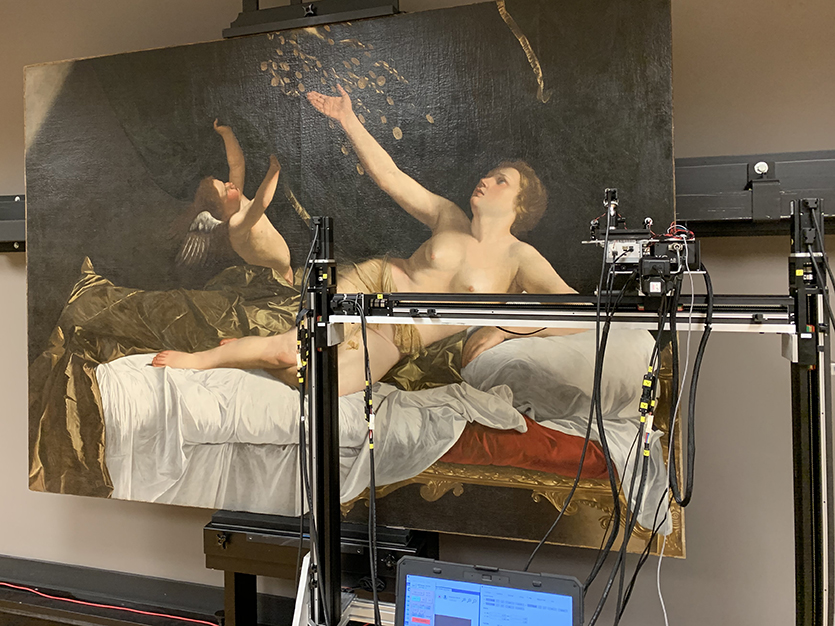Orazio Gentileschi’s Autograph Copies: Two Versions of Danaë
Imaging and pigment analysis gives insight into the artist’s palette and techniques
It was a common practice for Baroque artists like Orazio Gentileschi (1563–1639) to produce what are called autograph copies of their works after completing a commissioned painting for a patron. The Tuscan-born Orazio—often referred to by his first name to distinguish him from his artist daughter Artemisia—worked extensively for patrons in Rome, Genoa, Paris, and England. His vibrant palette was visible in works with both mythological and religious themes. In 1621, the Genoese nobleman Giovanni Antonio Sauli commissioned three paintings: Danaë, Lot and His Daughters, and Penitent Magdalene. There are known copies of each of these paintings, including autograph versions by Orazio.
The Cleveland Museum of Art and the J. Paul Getty Museum each have a version of Orazio Gentileschi’s Danaë in their collections. Prior studies had revealed developments in the Getty version’s underlying composition that are not present in the Cleveland version, indicating that the Getty Danaë was painted first and the Cleveland version is an autograph copy of the Getty original, painted between 1622-23.

In this research study, noninvasive macro X-ray fluorescence (MA-XRF) and hyperspectral imaging (HSI) were used to analyze the painting’s chemical and molecular fingerprints in the palette. While the palette of the Cleveland Danaë appears traditional for the time period, some traces of elements and elemental combinations could be used to understand Orazio’s sourcing of pigments as he traveled across Europe.
The scientific investigation of the Cleveland Danaë was undertaken in conjunction with a conservation treatment. The Getty and Cleveland Danaë have had divergent conservation treatments over time. The elemental and spectroscopic analysis performed on the Cleveland version revealed sections of titanium white that been in-painted in previous treatments. The concurrent conservation and technical analysis allowed scientists, conservators, and curators to deepen their investigations and propose future directions for research into Orazio’s materials and techniques.
To learn more:
Variations: The Reuse of Models in Paintings by Orazio and Artemisia Gentileschi, Cleveland Museum of Art Collections In Focus
